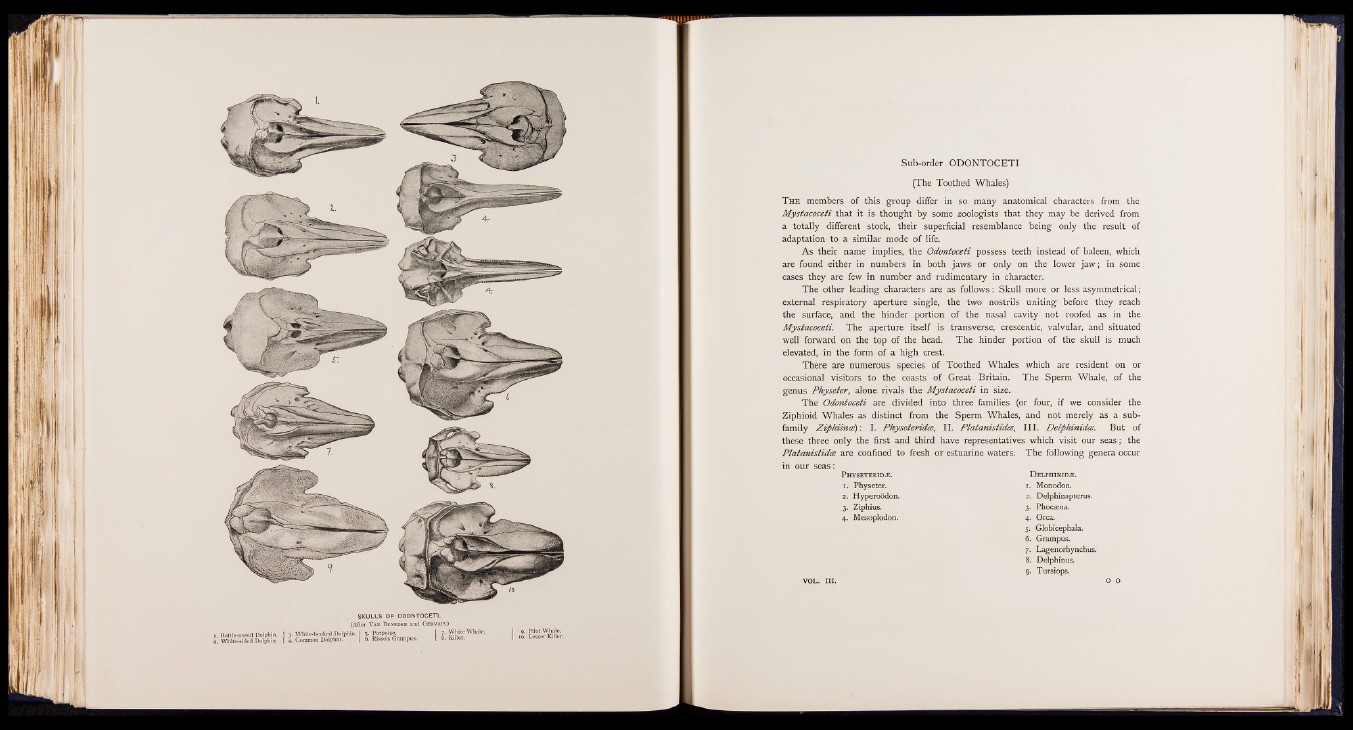
I B H «Big
Sub-order ODONTOCETI
(The Toothed Whales)
T he members of this group differ in so many anatomical characters from the
Mystacoceti that it is thought by some zoologists that they may be derived from
a totally different stock, their superficial resemblance being only the result of
adaptation to a similar mode of life.
As their name implies, the Odontoceti possess teeth instead of baleen, which
are found either in numbers in both jaws or only on the lower jaw ; in some
cases they are few in number and rudimentary in character.
The other leading characters are as follows: Skull more or less asymmetrical;
external respiratory aperture single, the two nostrils uniting before they reach
the surface, and the hinder portion of the nasal cavity not roofed as in thé
Mystacoceti. The aperture itself is transverse, crescentic, valvular, and situated
well forward on the top of the head. The hinder portion of the skull is much
elevated, in the form of a high crest.
There are numerous species of Toothed Whales which are resident on or
occasional visitors to the coasts of Great Britain. The Sperm Whale, of the
genus Physeter, alone rivals the Mystacoceti in size.
The Odontoceti are divided into three families (or four, if we consider the
Ziphioid Whales as distinct from the Sperm Whales, and not merely as a subfamily
Ziphiincé) : I. Physeteridce, II. Platanistidce, III. Delphinidce. But of
these three only the first and third have representatives which visit our seas; the
Platanistidce are confined to fresh or estuarine waters. The following genera occur
in our seas:
P hyseteridce. D eLPHINIDjE.
i. Physeter. 1. Monodon.
2. Hyperoödon. ' 2. Delphinapterus.
3. Ziphius. 3. Phocaena.
4. Mesoplodon. 4. Orca.
5. Globicephala.
6. Grampus.
7. Lagenorhynchus.
8. Delphinus.
9. Tursiops.
VOL. III. o o